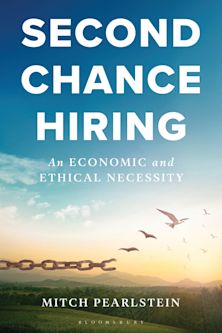- Home
- ACADEMIC
- Criminology
- Criminology - Other
- The 'Million Dollar Inmate'
The 'Million Dollar Inmate'
The Financial and Social Burden of Nonviolent Offenders
The 'Million Dollar Inmate'
The Financial and Social Burden of Nonviolent Offenders
This product is usually dispatched within 3 days
- Delivery and returns info
-
Free US delivery on orders $35 or over
You must sign in to add this item to your wishlist. Please sign in or create an account
Description
What kinds of beliefs do most Americans hold about crime and violence, and where do these beliefs come from? What kinds of people are sent to prison—are the average inmates dangerous criminals, or are they involved in low-level drug-related, property, or public-order offenses? Who is ultimately paying for their time in prison? The "Million Dollar Inmate" highlights the financial and social costs of America's incarceration of non-violent offenders. With its focus on the specific population of non-violent offenders, this book provides a unique, sociological approach to the problem of handling such a large population at such tremendous costs—paid, for the most part, by taxpayers. Basing her insight on extensive research into the origins of America's correctional systems, the visible and non-visible costs incurred by the practice of incarcerating nonviolent offenders, and the goals of the prison system, Heather Ahn-Redding dares to expose flaws in current correctional practices and suggest ways they can be not only changed but also re-envisioned. Ideally suited to researchers, advanced undergraduate students, graduate students, and policymakers.
Table of Contents
Part 2 Part I. Introduction and Early Sentencing
Chapter 3 Chapter 1. An Introduction to the "Million Dollar" Inmate
Chapter 4 Chapter 2. Punishment in the 20th Century: Run-On Sentences
Part 5 Part II. Sentencing and Prisons Today
Chapter 6 Chapter 3. Sentencing Today: A Sentence is a Sentence - Period!
Chapter 7 Chapter 4. Prison Conditions
Part 8 Part III. Financial and Social Costs of Incarceration
Chapter 9 Chapter 5. The Financial Costs of Incarceration: An Overview
Chapter 10 Chapter 6. Expensive Prisoners
Chapter 11 Chapter 7. The Social Costs of Incarceration: The Hidden Yet Expensive Side of Prison
Part 12 Part IV. Goals of Incarceration
Chapter 13 Chapter 8. Retribution: Can We Have Our "Just Desert" and Eat It Too?
Chapter 14 Chapter 9. Incapacitation: If We Lock Them Up, Maybe They'll Just Go Away!
Chapter 15 Chapter 10. Some Specifics on Deterrence, in General
Chapter 16 Chapter 11. Rehabilitation and Treatment: Where is the Correction in our Correctional Institutions?
Part 17 Part V. Conclusion
Chapter 18 Chapter 12. The Benefits of Incarceration - Real and Perceived
Chapter 19 Chapter 13. Policy Recommendations
Product details
| Published | Oct 15 2010 |
|---|---|
| Format | Paperback |
| Edition | 1st |
| Extent | 256 |
| ISBN | 9780739114971 |
| Imprint | Lexington Books |
| Dimensions | 9 x 6 inches |
| Publisher | Bloomsbury Publishing |
About the contributors
Reviews
-
The 'Million Dollar Inmate' makes a significant contribution to the field. The main argument of this well-written and engaging book is clear and compelling: We are putting too many nonviolent offenders in prison for too long under destructive conditions that breed antisocial conduct both in prison and when offenders return to the community. We are spending a lot of money, expending and jeopardizing social capital, and getting little or nothing of a positive, tangible nature in return. This thoughtful and thought-provoking book argues persuasively for alternative sanctions that are less costly and destructive for the offender, his loved ones, and society at large.
Robert Johnson, Professor of Justice, Law and Criminology, American University
-
Ahn-Redding covers a comprehensive array of topics and subtopics. . . The book has a number of benefits. The undergraduate looking for topics to synthesize will find ample sources in the 30 pages of bibliography. Graduate students and seasoned researchers will also find material to further expound and explore.
Corrections Today
-
The 'Million Dollar Inmate' presents a sobering exposé of the costs involved in this nation's over-reliance on prison as a punishment for non-violent criminal offenders. Ahn-Redding has utilized a myriad of sources to show that prison is neither effective nor cost-efficient as a deterrent to crime. The book sheds light on all the costs of imprisonment, not just brick-and-mortar and personnel costs, but the collateral and hidden costs of incarcerating over two million people who are, because of their imprisonment, unable to contribute to the economic productivity of their neighborhood, or meet their responsibilities as mothers and fathers, leading to the next generations of 'million dollar inmates.'
Joycelyn Pollock, Texas State University-San Marcos


































